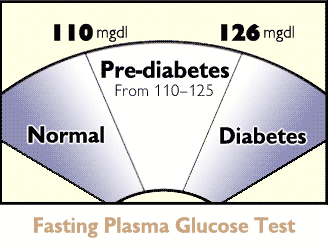
Diabetes diagnosis is established based on the three Classic Symptoms of Diabetes Mellitus, which are Polyuria (excessive passage of urine), Polydipsia (abnormal thirst) and Polyphagia (pathological desire to eat). And then the results of blood tests that showed levels of high blood sugar (not normal).
Diabetes happened when our pancreas, could not produce enough or any insulin. Insulin is a chemical which allows our body cells to use glucose to make energy. When there is no insulin in the blood, the glucose levels rise and can "spill over" into our urine.
[ Read also: Sir Frederick Grant Banting and History of Insulin Discovery ]
A simple urine test can diagnose diabetes if there is glucose present in the urine. However, the best way to diagnose Diabetes Mellitus is by a 2-hour glucose tolerance test. To measure blood sugar levels, blood samples are usually taken after the diabetic patient has been fasting for 8 or 12 hours, however, for a comparison, it could also be taken after meals.
Need special attention for patients over the age of 65 years. Examination should be done after fasting and not after eating because of old age have a higher increased of blood sugar level.
The following are the criteria of blood sugar level from the American Diabetes Association:

Fasting Blood Sugar
<100 Normal -------- 101-125 Pre-Diabetes -------- >125 Diabetes
Post-Prandial Blood Sugar
<140 Normal -------- 141-199 Pre-Diabetes -------- >199 Diabetes
Other blood tests can be done is a glucose tolerance test. This test is performed on certain conditions, such as in pregnant women. This is to detect diabetes, which often occurs in pregnant women.
Patients fasted and blood samples taken to measure fasting blood sugar levels. Then patients were asked to drink a special solution containing some glucose and 2-3 hours later another blood sample taken for examination.
Before developing into type 2 diabetes, patient is usually always have pre-diabetes, which has symptoms of blood sugar levels higher than normal but not high enough to be diagnosed as diabetes. At least 20% of the population aged 40 to 74 years suffering from pre-diabetes.
Research shows some damage in the long run, especially on the heart and blood circulatory system during this pre-diabetes. With pre-diabetes, you will have a risk of one and a half times greater for heart disease. When you suffer from diabetes, the risk increased to 2 to 4 times.
However, in some people who have pre-diabetes, it is possible for a diabetes can be delayed or prevented by lifestyle changes. Diabetes and pre-diabetes can occur in people with diverse age and racial, but there are certain groups who have a higher risk.





 Older Post
Older Post






